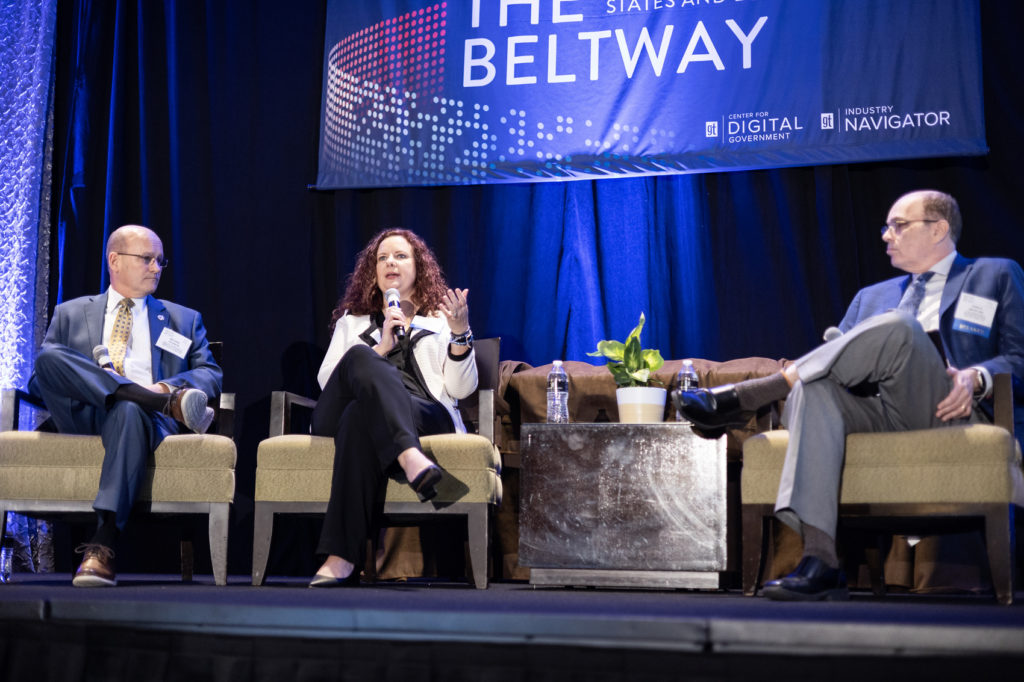Three Takeaways from Beyond the Beltway Conference from a self-proclaimed GovTech geek
.png)
Zencity
The Platform for Community Trust
We all have our vices; mine is that I am a huge geek when it comes to technology trends in the public sector space (as far as vices go, it’s a pretty harmless one). One of the perks of living in D.C. is the abundance of events in the GovTech space that anyone can attend – perfect for a government nerd such as me. GovTech’s Beyond the Beltway conference last week brought together CIOs and IT leaders in state and local gov – and I was afforded the opportunity to get a front-row seat and listen in on their discussions and thinking going into the year ahead.
Digital infrastructure is no longer just “nice to have.”
The main theme is the fact that customer experience now ranks in the top three priorities for all State, Local and Educational agencies (SLED). Due to behavioral changes resulting from Covid-19, residents have come to expect a digital-first mindset. Numerous cities and counties that operated remotely during the pandemic and whose residents got accustomed to interacting digitally are now expecting a more seamless digital customer experience. This ranges from digital access to government services, like permits or paying utilities, to interacting with the authorities using electronic and mobile devices. Local government agencies are increasingly discovering that developing and strengthening their digital infrastructure will meet their residents where they are and help with increased caseloads and staff shortages. technology is the solution to improving customer experience, enhancing engagement, and building trust between the government and its community.

Recession? Not in SLED.
Despite a looming recession, state and local entities have an opportunity because their financial resources remain strong. Stemming from federal aid and balanced budgets, cities’ and counties’ reserve funds have increased by 25% and 36%, respectively. Federal aid dollars, from the three Covid-19ra stimulus packages, to ARPA and the IIJA (Infrastructure Investment and Jobs Act), provide state and local governments with the resources they need to invest in new, innovative technology now front and center for residents. Overall, SLED IT spending is forecasted to increase from 3% to 5% in 2023, with a potential of over $137 billion dollars to be invested.
There’s less heavy lifting.
In the past, SLED agencies had to choose between closing a technological gap quickly or delaying the launch to ensure the digital experience is smooth and accessible. Adopting new technologies often comes with a host of challenges, like integration into existing digital infrastructure, adoption by staff and residents, etc.). Still, the need to offer digital services quickly meant that some compromise on customer experience was inevitable.
Today, solutions are designed with these challenges in mind, and rolling out and embedding new technology systems is easier than ever. SLED agencies don’t have to choose between waiting for the perfect or settling for the good. They can introduce new technologies knowing they will be seamlessly integrated into their existing infrastructure and current workflows.
SLED agencies don’t have to figure out how to leverage these new capabilities into their processes but can rely on their tech providers to do the heavy lifting. AI is a prime example; recently, Zencity integrated Chat GPT into our platform to help customers create press releases and social media posts in seconds.
Overall, the future is looking bright for SLED agencies. Residents are expressing an appetite for digital services while funds for such processes are becoming available, and the technological solutions on offer are increasingly easier to adopt and integrate. Now is the time for local and state governments to charge ahead and close the technological gap with their private sector counterparts. They are well-positioned to give residents what they’re asking for by introducing new technologies while maintaining a focus on resident satisfaction. As for a GovTech fan like me, I can’t wait to watch as technology elevates government-community relations and the new opportunities (and challenges) it introduces.
%20copy-1.png?width=544&height=120&name=Logo_black%20(1)%20copy-1.png)



